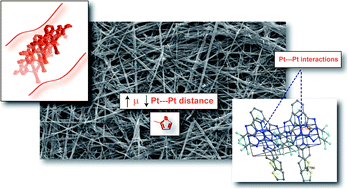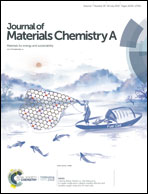Charge transport enhancement in supramolecular oligothiophene assemblies using Pt(ii) centers as a guide†
Abstract
The self-assembly behaviour of platinum(II) neutral complexes has been explored in derivatives exposing oligothiophene substituents in order to organize the semiconducting units in ordered supramolecular structures. The morphology and the photophysical properties of the assemblies were studied by scanning electron microscopy, powder X-ray diffraction and photoluminescence techniques, and correlated to their charge transport properties measured in space-charge-limited current (SCLC) devices. The nature of the intermolecular Pt⋯Pt and/or π–π stacking interactions in the different supramolecular structures and in particular the inter-chromophoric distance were found to affect the hole mobility values estimated for the various semiconducting thiophene-based assemblies. The thiophene-containing architectures exhibit enhanced mobility values compared to the free ligand based ones. These results demonstrate that the supramolecular organization strategy can be applied to generate semiconducting materials via exquisite control over the arrangement of simple conjugated segments.



 Please wait while we load your content...
Please wait while we load your content...